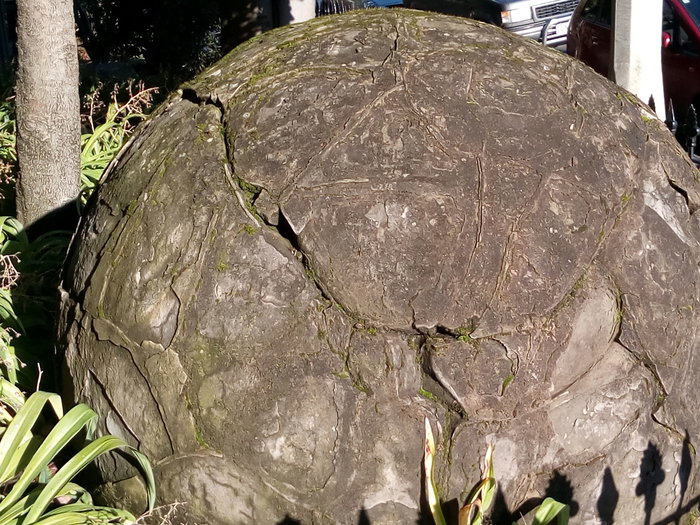This post continues on from Part 1 of the Otago Museum Native Garden (visited Sunday 23 July 2017). Dunedin, New Zealand. Part 3 | Part 4

A Moeraki Boulder is sited prominently near the side entrance to the museum. Above the boulder we see the foliage of a taraire tree (Beilschmeidia tarairi).

The boulder is beautifully textured and mossy. The plants in the front-right of the photo are rengarenga (Arthropodium cirratum) commonly known as rock lily.

Fissures and markings on the Moeraki Boulder.

Moeraki Boulder detail. The Visit Waitaki Oamaru website has good concise information and photos about the Moeraki Boulders in their natural environment (East Otago coastline).

When I looked closely at the taraire tree I was surprised to notice immature but fleshy fruits among the foliage. This tree naturally grows in warmer northern parts of NZ and I hadn’t expected to see fruits in mid-winter in Dunedin! The fruits will ripen to a very dark purple and almost look black when mature.
“Taraire is a member of the Family Lauraceae which is mainly confined to tropical and subtropical areas; probably the best known member of the family being the bay laurel, Laurus nobilis.” — Tane’s Tree Trust website

Here’s a closer view of the taraire fruits and leaves.
“Taraire’s olive-shaped purple fruits are held upright near the tips of its branches. The fruits ripen in winter, and are eaten by kererū (native pigeons), which distribute the seed.” — from the Te Ara website

Kereru (native pigeon) in a tree at Maple Glen (a must-see garden near Wyndham in Southland, New Zealand). The native pigeon is big and plump and if you’re looking at one front-on it looks as though its wearing a white singlet. Very colourful bird and we see them a lot in Dunedin – at the Botanic Garden, the University, and sometimes perched up on a power-line above the street! Photo by SO.
Words and photos by Exploring Colour except the pigeon photo which is by SO (2017)
Leave a comment